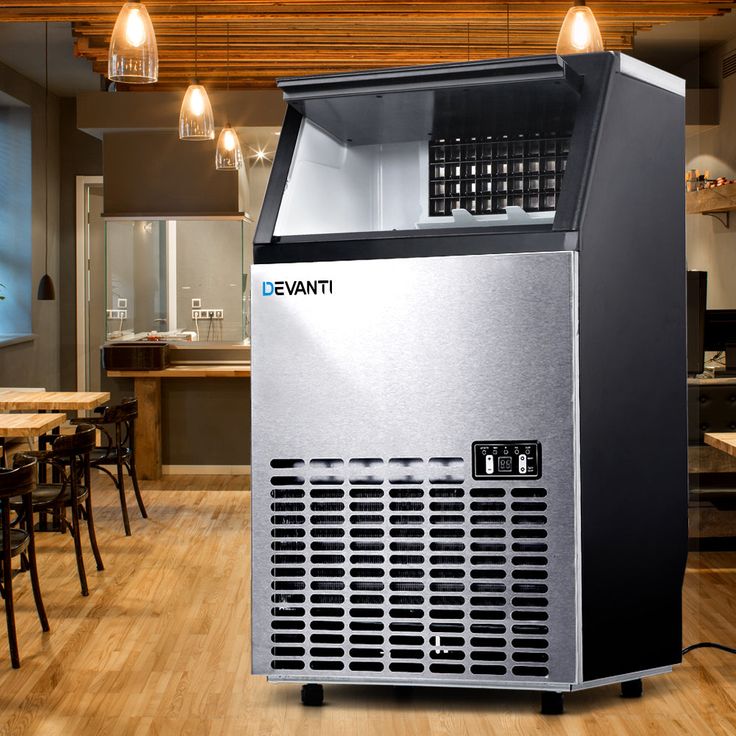Crystal clear ice, the kind you see in high-end bars and sophisticated cocktails, is far more than just frozen water. Its pristine appearance, slower melting rate, and pure taste are the result of a precise and ingenious freezing process. Unlike the cloudy cubes produced by standard ice trays or conventional ice makers, clear ice is free from trapped air bubbles and impurities. Understanding how clear ice makers achieve this remarkable clarity demystifies the process and highlights the science behind a truly elevated beverage experience.
The Problem with Cloudy Ice
To appreciate how clear ice is made, it’s important to understand why regular ice is cloudy. When water freezes rapidly and uniformly from all directions (as in a typical ice tray in a freezer), two main things happen:
- Trapped Air Bubbles: As water turns to ice, dissolved gases (like oxygen and nitrogen) are expelled. If the freezing is too fast, these gas bubbles get trapped within the ice structure, making it appear opaque and white.
- Impurities: Minerals, sediments, and other dissolved solids present in tap water are pushed out of the freezing water as ice crystals form. In rapid, multi-directional freezing, these impurities get concentrated and trapped in the center of the ice cube, contributing to its cloudy appearance.
These trapped elements not only make the ice look unappealing but also cause it to melt faster (due to the air pockets) and can impart subtle off-flavors to your drink.
The Core Principle: Directional Freezing
The fundamental secret to clear ice is directional freezing. This method mimics how clear ice forms in nature, such as in frozen lakes or icicles. Instead of freezing water from all sides, clear ice makers control the freezing process so that water freezes slowly from one direction only clear ice maker.
Here’s how it works:
- Controlled Cold Source: The ice maker applies cold to only one side of the water (typically from the bottom or top). This creates a freezing front that moves progressively through the water.
- Impurity and Air Expulsion: As the water freezes slowly and directionally, the forming ice crystals “push” impurities and dissolved air bubbles ahead of the freezing front. These unwanted elements are forced towards the unfrozen portion of the water.
- Isolation and Discard: The impurities and air eventually collect in a designated area (often a reservoir of unfrozen water or a small, cloudy section of ice) that is separate from the main ice cube being formed. This “dirty” water or cloudy ice can then be drained or simply discarded, leaving behind only the pure, clear ice.
Components and Processes in a Clear Ice Maker
While the core principle is directional freezing, different clear ice makers employ various designs to achieve it:
- Insulated Molds (Passive Systems): These are common for home use. They consist of an insulated container (like a small cooler) and molds. When placed in a regular freezer, the insulation prevents the water from freezing from the sides and bottom, forcing it to freeze from the top down. Impurities are pushed to the bottom of the mold, often into a separate reservoir that remains unfrozen or forms a cloudy layer to be discarded.
- Dedicated Countertop Machines (Active Systems): These appliances automate the directional freezing process. They typically have a refrigerated plate (often at the bottom or top) that slowly freezes a layer of water. A pump might circulate water over this plate, continuously washing away impurities and air bubbles as the ice forms. The clear ice then builds up in layers, and once a cycle is complete, it’s released into a storage bin.
- Commercial Machines: Large-scale commercial clear ice makers use more robust versions of these active systems, often with powerful pumps, filtration systems, and large freezing plates to produce hundreds of pounds of clear ice blocks or cubes daily.
The Benefits of the Process
The result of this meticulous freezing process is ice that is:
- Crystal Clear: Visually stunning and enhances any drink.
- Denser: Lacks air pockets, making it harder and more resistant to cracking.
- Slower Melting: Melts at a significantly slower rate, preventing rapid dilution of beverages.
- Pure Tasting: Free from impurities that can affect flavor.
Conclusion
Clear ice makers, whether simple insulated molds or sophisticated countertop machines, all leverage the principle of directional freezing to transform ordinary tap water into extraordinary, crystal-clear ice. By understanding this process, you can appreciate the science and engineering that goes into crafting the perfect cube, elevating your home bar and ensuring every sip of your beverage is as pure, cold, and visually appealing as possible.


